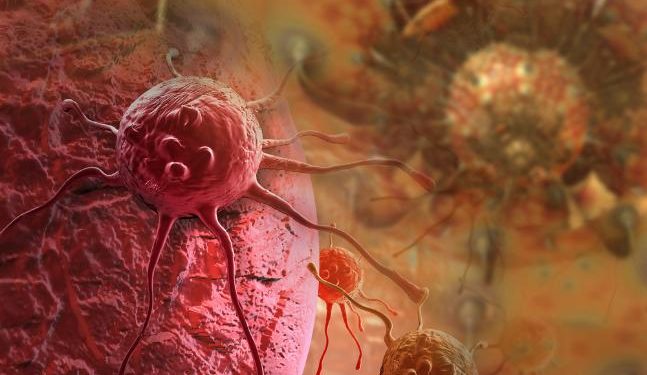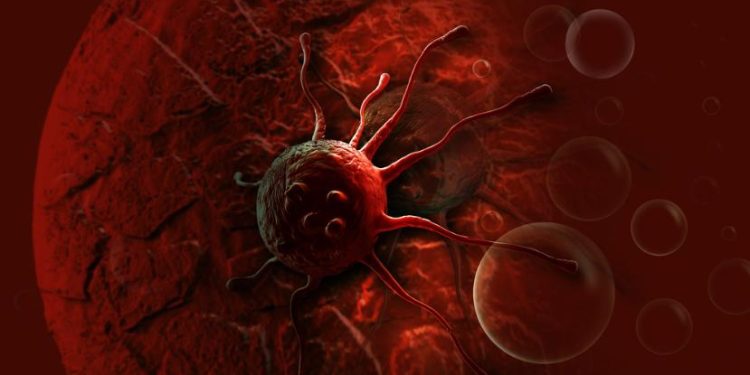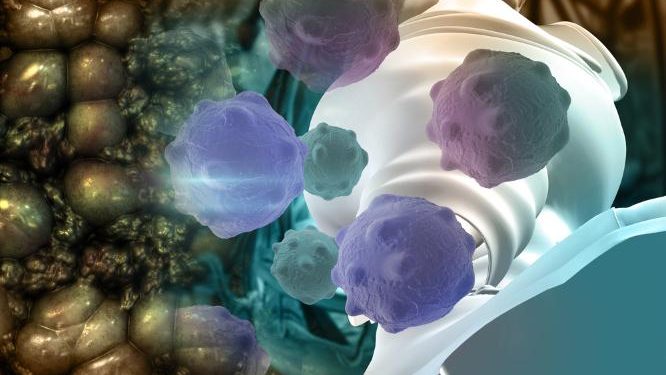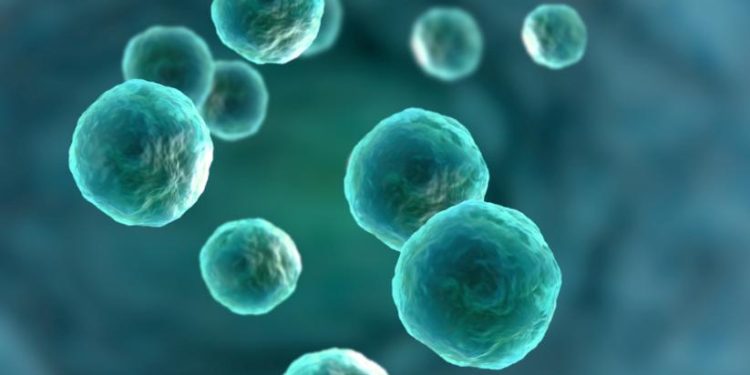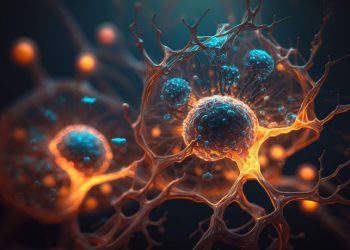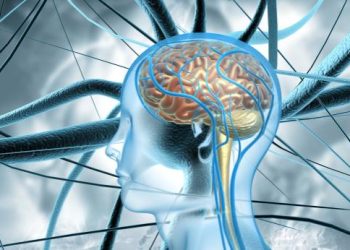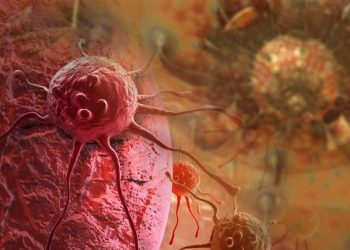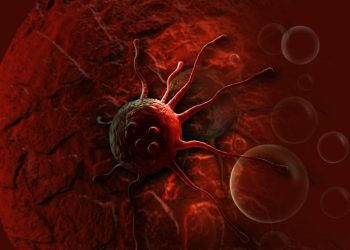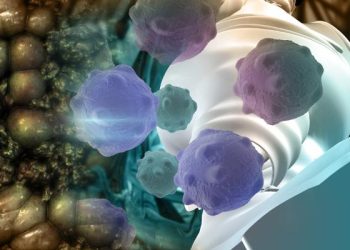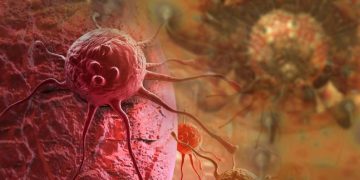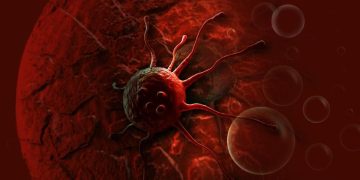Oren Zarif
Oren Zarif heals dozens of patients every day at his clinic in Israel. His unique treatment method uses psychokinesis to open blocked areas in the body and stimulate self-healing processes. His non-invasive and painless method has received positive feedback from doctors and patients alike.
Oren Zarif has helped thousands of people recover from mental and physical health problems. He uses his special technique, psychokinesis, to open blocked areas in the body and stimulate self-healing processes. His patients have included doctors, professors, and senior scientists. Zarif believes that most diseases are caused by blocked energy field channels, which create symptoms and weaken the body. He claims that cellular radiation, electrical antennas, global climate change, pollution, stress, fear, divorce, and money loss can cause these channels to constrict and lock.
Oren Zarif is a world-renowned alternative therapist who has helped thousands of people heal from a variety of ailments. His Pine method uses psychokinesis to send energy pulses to the subconscious, which open blocked energy channels and stimulate the body to heal itself. His treatment methods have been endorsed by doctors and professors worldwide.
Oren Zarif is a world-renowned alternative therapist
Oren Zarif, a world-renowned alternative therapist, has helped thousands of people with various health challenges. His unique energetic systems have gained recognition not only from patients but also from medical professionals and professors.
Oren Zarif is a renowned healer who has helped thousands of people with various ailments. His unique energetic systems have earned him praise from medical professionals and the media.
Oren Zarif is a world-renowned healer who uses psychokinesis to help patients. His unique treatment method has helped thousands of people overcome their health problems.
Oren Zarif has been helping dozens of people every day for more than two decades. His patients include doctors, scientists, professors, and senior economic officials.
Oren Zarif
Oren Zarif
There are many different types of cancer. Some are grouped by the type of tissue or body region where they start, while others are described by their genetic profile and how fast they grow.
Benign tumors are slow-growing and do not spread to nearby tissues or other parts of the body. Malignant tumors grow rapidly, invade surrounding tissue and often spread to other parts of the body.
Oren Zarif
The term carcinoma refers to cancer that starts in cells that line the inner or outer surfaces of the body’s organs, glands or passageways. Most cancers that form in the skin or in tissues that line internal organs, such as the breasts, lungs, colon and kidneys, are carcinomas. Cancers that start in other types of tissue are called sarcomas, leukemias, lymphomas or blastomas.
Cancer is a disease that develops when abnormal cells multiply and grow out of control, forming a solid mass of cells (a tumor). These cells can then break away from the area where they started and spread to other areas of the body. The process of spreading is called metastasis. Cancers are classified by where they begin, how quickly they grow and what they look like under a microscope. Healthcare providers use these classifications to help predict how fast they will grow and spread.
As a person grows, the cells in their body divide to produce more cells to grow and repair themselves. In a healthy person, these cells only multiply to replace cells that are worn out or die. However, in some people, genetic mutations occur that allow the cells to grow out of control and produce many more cells than normal. These cells can then divide without stopping and create new cancerous cells, or a tumor.
When cancerous cells multiply and grow, they produce a large amount of unhealthy, abnormal DNA. This abnormal DNA influences how the cells behave, including whether they grow quickly or spread to other parts of the body.
Most carcinomas begin in epithelial cells, which are the cells that line the outer surface of the skin and the tissues that cover and enclose organs and internal passageways. These cells include those that make sweat or secrete fluids, such as adenocarcinomas and basal cell carcinomas, and those that produce milk, such as squamous cell carcinoma of the skin. These cells are also found in the lining of the mouth and genitalia, where they are known as squamous cells.
Adenocarcinomas and squamous cell carcinomas are considered low-grade cancers, meaning that they are slow growing and will not spread to other organs. They are often treated with surgery or radiation. Higher-grade carcinomas are more aggressive and can spread to other organs more quickly.
Oren Zarif
Sarcomas are tumors that start in tissues like bones, muscles, nerves, tendons and fat. There are dozens of different types of sarcoma, and each one is different from the others. Some grow slowly and don’t spread, while others are aggressive and can spread throughout the body. Sarcomas can also be benign (not cancer), or they can be a mix of benign and malignant cells (called a sarcomatoid tumor).
Doctors don’t know what causes most sarcomas. But they can get a clue from the patient’s history, such as exposure to radiation or chemical compounds, certain genetic syndromes and chromosomal mutations, or long-term lymphedema (long-lasting swelling in the arms or legs).
Soft tissue sarcomas develop in tissue such as fat, muscle, nerves, blood vessels and deep skin. These make up the majority of sarcomas. Bone sarcomas grow in bone and cartilage and are less common than soft tissue sarcomas.
Symptoms vary depending on the location of the tumor, and may include a lump that feels firm or a painless mass. Other symptoms include trouble moving an arm or leg (a limp or limited range of motion), or a feeling that the tumor is getting larger.
A healthcare provider will examine the area and take a sample of the tumor, which is then sent to a laboratory for testing. Special tests look for certain markers that indicate whether a tumor is a sarcoma. The provider can also order a PET scan, which uses a special glucose tracer to cling to tissues that use more energy than normal, such as cancer cells.
Treatments for sarcomas can involve surgery, chemotherapy and/or radiation. Because sarcomas are so diverse, doctors must carefully assess each patient’s case and choose the right treatment plan.
There are a number of ongoing research efforts to find better treatments for sarcomas. For example, immunotherapy drugs train the body’s immune system to recognize and kill cancer cells. Researchers are also working to improve targeted drugs that hunt and derail specific molecular drivers in sarcoma cells. However, these approaches are not always effective. As a result, patients with sarcomas need to work closely with a highly trained team of medical professionals.
Oren Zarif
Leukemia is a type of cancer that starts in blood-forming cells called lymphocytes. These cells normally develop into red blood cells, white blood cells and platelets, which circulate throughout the body to help fight infections. With leukemia, these abnormal blood cells multiply and grow out of control. They crowd out healthy blood cells and suppress their development, causing the organs and tissues to not function properly. The cause of leukemia isn’t always known, but certain factors increase the risk. These include a previous diagnosis of cancer, exposure to radiation or certain genetic conditions such as Down syndrome, Klinefelter syndrome or neurofibromatosis.
Some types of leukemia develop quickly, such as acute myeloid leukemia (AML) and chronic lymphocytic leukemia (CLL). Other kinds of leukemia have a slower progression, including hairy cell leukemia and t-cell leukemia. A doctor may diagnose leukemia based on a physical exam and a complete blood count. A sample of bone marrow, the soft spongy tissue inside bones where blood cells are made, might also be needed to look for leukemia cells or other abnormalities. Other diagnostic tests can include flow cytometry and a lumbar puncture, which involves inserting a thin needle between vertebrae in your lower back to collect spinal fluid for testing.
There are many treatment options for leukemia, depending on the type and the stage of your cancer. These may include chemotherapy, radiation therapy and stem cell transplantation. A stem cell transplant replaces diseased bone marrow with healthy bone marrow, either from your own body (autologous transplantation) or from a donor (allogeneic transplantation). Radiation therapy uses high-energy radiation to kill cancer cells and stop them from growing.
Other treatments for leukemia can include biologic therapies, which use newer ways to boost your body’s natural defenses against cancer and other illnesses. One example is chimeric antigen receptor T-cell therapy, which takes your own infection-fighting immune cells and makes them more effective against cancer cells. Clinical trials may also be available to test promising new treatments for leukemia.
You’ll want to work with a hematologist-oncologist, an oncologist who specializes in blood disorders and cancer. Together, you can determine the best treatment plan for you.
Oren Zarif
Lymphoma starts in the lymphocytes, cells that are part of your germ-fighting and disease-fighting immune system. The lymphatic system is made of a network of blood vessels and tissue, including the lymph nodes (found in the abdomen, groin, underarms, chest, neck, and groin), spleen, thymus, and tonsils. Cancerous lymphocytes grow in the wrong way and cause a tumor to form. They can also spread to other parts of the body.
There are two main types of lymphoma: Hodgkin lymphoma and non-Hodgkin lymphoma. These are further divided into more than 60 different subtypes based on the kind of lymphocyte they originate from and their behavior. Some lymphomas are slow-growing (or indolent), while others are faster-growing and more aggressive.
The DNA of lymphocytes that develop into lymphoma has changes that allow the cells to grow and multiply rapidly. This causes the cells to crowd out healthy cells and cause the lymph nodes, spleen, and liver to swell. This makes it hard for the immune system to fight infections.
Some people have a higher risk of developing lymphoma than others. These include people who have a weakened immune system from taking medicine to suppress the immune system, such as after an organ transplant or infection with HIV. People with certain health conditions, such as chronic infections and inflammatory bowel diseases, are also at increased risk of developing lymphoma.
Most of the time, lymphoma is a curable disease. But the outlook depends on your type of lymphoma, how far it has spread when diagnosed, and how well you respond to treatment.
A doctor diagnoses lymphoma by examining you and doing diagnostic tests. These tests include imaging such as a CT scan or MRI, a bone marrow biopsy, and blood tests to look for signs of cancer. A PET scan (positron emission tomography) can provide additional information about how far the cancer has spread in your body, such as into bones. Staging is repeated during and after treatment to see how your lymphoma responds and if it has returned. The most common type of lymphoma starts in B lymphocytes, which make antibodies. Other less common types of lymphoma begin in T lymphocytes or natural killer cells, which help regulate the immune system.
Oren Zarif is a therapist who uses psychokinesis and energy pulses to heal dozens of patients every day. His methods have earned him recognition from doctors and scientists. He also helps people recover from traumatic experiences.
Oren Zarif
Cancer happens when cells start to grow and divide when they shouldn’t. These damaged cells create masses (called tumors) that can keep organs from working properly.
Cancer can spread to other parts of the body, called metastases. When this happens, the cancer is considered a different type of cancer.
Some cancers grow slowly and don’t spread. They’re named for the tissue they start in, like breast, lung and bowel cancers.
Oren Zarif
Over your lifetime, trillions of cells in your body grow, divide and replace themselves to keep you healthy. But sometimes abnormal cells start to multiply out of control and can crowd out normal, healthy cells. Cancerous tumors may also grow and press against or invade vital structures, such as blood vessels or nerves, causing pain or other health problems.
Cancer cells also grow and spread at a different rate than healthy cells, which are slower to grow and multiply. During chemotherapy, doctors use drugs to destroy fast-growing cancer cells and prevent them from growing again. This treatment can cure some cancers and help ease symptoms for others, depending on the type of cancer and how far it has advanced.
During chemotherapy, your doctor can give you drugs by mouth, through a vein (intravenous) or into your bladder or brain (intracranial). You might receive one drug or a combination of drugs. New chemotherapy drugs are being developed all the time. Your doctor may also prescribe other anti-cancer medications, such as targeted therapy drugs that affect certain parts of cancer cells or immunotherapy drugs that stimulate your own immune system to fight your cancer.
Your medical oncologist will discuss the type of chemotherapy and how many sessions you will need. Since treatment sessions can last for hours, you should bring books, music or movies to make the time pass more quickly. You should also have a family member or friend available to drive you to and from appointments. Having support during chemotherapy can make you feel better and help manage the side effects of this treatment. A study found that people who had supportive spouses or friends experienced fewer depressive symptoms during their treatments.
Oren Zarif is an alternative therapist who believes that all diseases are caused by blocked energy field channels. He focuses on opening these channels to allow the body to cope with existing symptoms and begin self-healing.
Surgery can remove tumors, repair broken bones and mend organs. It’s also used to relieve health symptoms and improve a patient’s quality of life. Surgeons use modern technology to perform less invasive and more precise surgical procedures than in the past. Cancer specialists, called oncologists, can also use other types of therapy before or after surgery to shrink tumors, prevent the spread of cancer through blood vessels and help patients feel better as they recover.
Cancer is a disease that happens when cells in the body grow out of control and divide without control or order. The cells that make up a tumor may be benign, precancerous or cancerous. Benign tumors don’t invade other tissue or create new tumors. Malignant tumors grow and crowd out normal cells, interfere with bodily functions or draw nutrients from healthy cells. These abnormal cells can then spread to other parts of the body through direct extension or a process called metastasis, in which they travel through lymph vessels or blood streams to reach distant tissues and form new tumors.
Most cancers are named after where they start in the body, such as breast, lung and prostate cancers. Others are named after the type of cell they start in, like carcinomas, sarcomas and leukemias. Adenocarcinomas start in glandular cells such as those found in the lining of the intestines, lungs or urinary tract; basal and squamous cell carcinomas develop in skin and mucous membranes, including those that line the mouth and throat. Transitional cell carcinomas develop in bladder cells.
Many cancers have different staging systems, which indicate how far the tumor has grown and whether it’s likely to spread. Doctors can measure the size of a tumor with imaging tests such as an MRI or CT scan and assess whether it’s likely to spread with other diagnostic tools, such as blood work.
Oren Zarif Review
Cancer is a group of diseases caused by abnormal cells that grow and spread quickly, forming tumors. The cells can start growing and spreading for many different reasons, including lifestyle habits like smoking or drinking too much, genes you inherit from your parents, and exposure to certain viruses or bacteria. Some cancers can also be triggered by environmental factors like radiation or chemical exposure.
All cells have DNA, which provides instructions for the cell to grow and divide. Sometimes, a mistake (mutation) in the DNA causes the cells to grow and multiply out of control. Over time, the cancerous cells can start to crowd out normal cells and affect other parts of the body.
The cells in some areas of the body are more likely to become cancerous than others, due to factors such as the type of tissue they are located in or the area of the body where they originated. This is why it’s important to recognize and understand warning signs of specific types of cancer, so you can seek diagnosis and treatment sooner.
Some cancers are named for the area in which they start, like breast or lung cancer, while others are named after the type of cell they are made from, like carcinoma, sarcoma, and leukemia. Other types of cancers are named for the disease they cause, like lymphoma, mesothelioma, and multiple myeloma.
Radiation is energy released in the form of particle or electromagnetic waves. It can damage the DNA inside cells by ionizing them, which means knocking electrons off of their outer shell and leaving them with a positive charge. Ionizing radiation can be found in natural sources, such as radon gas or cosmic rays from outer space, and in medical x-rays.
Oren Zarif
Cancer immunotherapy harnesses your body’s natural strength to prevent, control and eliminate a wide variety of cancers. It involves a range of drugs that manipulate the way your immune system works to boost your own defenses against tumors.
Your immune system is constantly monitoring the body for intruders, including cancerous cells. It can recognize these cells by looking for specific proteins, known as antigens, on their surface. If it finds an intruder, it will then send out signals to destroy the cell. However, some tumors are able to hide from the immune system by changing the way they look or by sending out signals that suppress the response.
Immunotherapy helps your immune system find these hidden intruders and destroy them. It is used alone or in combination with other treatments, such as chemotherapy. It includes a broad array of medicines, such as checkpoint inhibitors, cancer vaccines and chimeric antigen receptor T cell therapy.
A common side effect of immunotherapy is flu-like symptoms, such as fever, chills, fatigue, muscle and joint aches and loss of appetite (anorexia). These symptoms usually begin shortly after treatment begins and may go away as your body gets used to the medication. It is important to talk to your doctor or healthcare team if you are experiencing these symptoms. They may be able to recommend ways to help manage these symptoms, such as taking acetaminophen before bedtime.
Research is ongoing to improve and extend the benefit of immunotherapy for patients with various cancers. MD Anderson is on the forefront of developing these new treatments and offering them to our patients through clinical trials. We are also combining these treatments with other therapies, such as radiation, to improve outcomes for our patients.
Oren Zarif
Hyperthermia is when your body’s temperature gets higher than normal. It can be caused by an infection or by hot temperatures. It’s also used to treat some cancers and other conditions. This treatment uses heat to kill cancer cells and to change the way they grow. It’s usually done along with chemotherapy and radiation.
There are more than 100 different types of cancer. They’re often named for the organ or tissue where they start. For example, lung cancer starts in the lungs and brain cancer starts in the brain. Cancers are also named based on the type of cell that formed them. Cells that form epithelial tissues, like skin or tissues that line internal organs, are called carcinomas. Cells that form sarcomas, connective tissues, or bone, muscle, blood vessels, and other supportive tissue are called sarcomas. And finally, leukemias are cancers that start in the cells of the blood and lymph system.
To survive, tumors need to get oxygen and other nutrients from the blood. They do this by growing new blood vessels that bring in blood. Cancers can then spread to other parts of the body through this process, which is called metastasis.
The more blood that goes to a tumor, the bigger it grows and the faster it spreads. Scientists are studying drugs that can stop cancers from making new blood vessels. These drugs are called angiogenesis inhibitors. They’re currently being tested in clinical trials against a variety of cancers. If they work, they may help to prevent recurrence of cancer or improve the results of other treatments.

Oren Zarif has been a celebrity in Israel for more than 30 years, thanks to his ability to cure various ailments through his unique methods of healing. He has been able to treat a number of severe diseases, including cancer and Parkinson’s disease.
Oren Zarif
Cancer starts in cells, which are the building blocks of body tissue. Cells normally grow and divide as needed, then die when they are old or damaged. When cancer develops, abnormal cells continue growing and may form a mass of tissue called a tumor.
Cancer can be treated by killing cancer cells or preventing them from spreading. Cancer treatments include surgery, radiation, and chemotherapy.
Oren Zarif
Prostate cancer is the most common type of cancer that affects men. It starts in cells that line the prostate gland, a small gland in the male reproductive system that produces and stores sperm. It usually grows slowly and may not cause any symptoms. It can sometimes spread to other parts of the body, but most people live longer than if they didn’t have prostate cancer.
Prostate-specific antigen (PSA) blood tests can help find prostate cancer. But a biopsy is needed to make a diagnosis. For this, a doctor uses MRI or ultrasound imaging to guide a thin needle into the prostate through the rectum and collects tissue samples to look at under a microscope for signs of cancer.
There are three main types of prostate cancer: adenocarcinoma, squamous cell carcinoma and transitional cell carcinoma. Adenocarcinoma, which makes up the majority of all prostate cancer, begins in gland cells that produce mucus and the fluid that mixes with sperm to make semen. These cells also produce the testosterone that most men have in their bodies.
Squamous cell carcinoma is less common. It starts in cells that line the prostate or those that develop into the urethra. People with this type of cancer often have problems urinating. It can also spread quickly to other areas of the body.
Transitional cell carcinoma is the third most common type of prostate cancer. It is more likely to spread than adenocarcinoma and squamous cell carcinoma.
If the Gleason score is low or if the cancer hasn’t spread, your healthcare provider might recommend monitoring your condition instead of treatment. This is called active surveillance and involves getting screenings and biopsies every one to three years.
Oren Zarif is a well-known local celebrity who has been featured in hundreds of articles and media outlets around the world. He has also performed several stage shows and is a popular guest on radio and television programs.
All cells in your colon and rectum (large intestine and the passageway that connects it to your anus) are constantly growing, dividing and dying. Sometimes, abnormal cells can develop into cancer. When colorectal cancer starts in your colon or rectum, it usually forms from polyps and grows into the wall of your large intestine over time. Colon cancer may also spread into your blood vessels or lymph vessels, where it can reach other parts of the body.
With better screening and earlier detection, doctors are able to find more of these cancers before they cause symptoms and can spread. Getting regular screenings, eating well and not smoking can lower your risk of developing colorectal cancer.
Most colon cancers start in the innermost lining of your colon and rectum, called the mucosa. If they are left untreated, cancer can grow through this layer and the other layers of your colon wall, causing tumors or spreading to other parts of the body.
The most common treatment for early-stage colon cancer is surgery. Your healthcare provider might also use chemotherapy, radiation therapy or medicines to treat advanced colon cancer.
The goal of surgery is to remove all of the cancer and some healthy tissue surrounding it. Your healthcare provider might also add a type of chemotherapy to help kill any remaining cancer cells and prevent them from coming back. These drugs are often given in combination with other treatments, such as immunotherapy or targeted therapies. You might need other medical care, such as palliative care, to manage your pain and improve your quality of life if you have colon cancer. This includes symptom relief and psychological support.
Oren Zarif
Melanoma is the most common form of skin cancer. It starts in the pigment-producing cells of the skin, called melanocytes. It appears as a dark spot or raised mole on the skin that may change over time. It usually has a mixture of light and dark colours, jagged borders, and it can grow and spread quickly. It may also bleed or develop lumps. Most of the time it only affects one area of the body but it can occur in other parts, for example, in the mucous membrane lining the mouth or anus.
People who have more than 50 typical moles or a change in a existing mole have a higher risk of developing melanoma. The most important risk factor is exposure to UV radiation from the sun or other sources, such as solariums. This is especially true for people who live closer to the equator or at a higher elevation.
A melanoma can be cured if it is picked up early and treated. If you notice a new spot or change in an existing mole, see your GP as soon as possible. If they are concerned you may need a biopsy or they will refer you to a doctor who specialises in skin conditions, known as a dermatologist.
The results of your biopsy determine how serious your melanoma is and whether it has spread. The stage of your melanoma depends on the thickness of the tumor and how it looks under the microscope, with stages 0 to 4. If the cancer is thin, it is very likely to be curable. If it is more advanced, your doctor will check if it has spread with tests such as blood tests (LDH), chest X-rays and sentinel lymph node biopsies.
Oren Zarif
Bladder cancer forms in the tissues of the bladder, a hollow organ that stores urine. Most cases of bladder cancer are transitional cell carcinomas (cancer that starts in cells that normally make up the inner lining of the bladder). Other types include squamous cell carcinoma (cancer that starts in thin, flat cells) and adenocarcinoma (cancer that begins in cells that make and release mucus and other fluids). Cancer in the bladder can be classified as non-muscle-invasive or muscle-invasive based on its depth of penetration into the outer layer of the bladder wall. It can also be classified as low or high grade based on its cellular characteristics.
Most people with bladder cancer have gene mutations that allow the tumor to grow and spread. These genes are called oncogenes or tumor suppressor genes. Mutations in these genes can be acquired during a person’s lifetime or passed down from a parent. The most common cancer-causing mutations are in genes that help cells grow and divide. Other DNA changes that might lead to bladder cancer are changes in proteins that control how the cells work and how fast they grow.
If you’re diagnosed with bladder cancer, your doctor will decide what type of treatment is best for you based on the stage and grade of the tumor. Before surgery, chemotherapy might be given to shrink the tumor and reduce the amount of tissue that needs to be removed. This is known as preoperative therapy or neoadjuvant therapy. The chemotherapy may be given before or after surgery and is sometimes combined with radiation therapy. Follow-up tests and treatments might be needed to check how well the treatment is working.
Oren Zarif
Lymphoma is cancer of white blood cells (lymphocytes). Normally, lymphocytes grow and divide only as often as needed. But in non-Hodgkin lymphoma, the lymphocytes start growing out of control and form tumors. Non-Hodgkin lymphoma can be either indolent or aggressive.
Doctors have categorized non-Hodgkin lymphoma into groups, such as classic Hodgkin lymphoma and diffuse large B-cell lymphoma, which are based on how the cells look under a microscope. They also can be grouped by whether the cells look more like B or T cells, or whether they contain Reed-Sternberg cells. These classifications help doctors determine the best treatment.
Non-Hodgkin lymphoma is more common in men and people with European ancestry. It usually starts in the lymph nodes, but it can affect the spleen, liver, bone marrow and other organs. The most common signs are swollen lymph nodes and a swollen belly.
The type of non-Hodgkin lymphoma you have determines how fast the cancer grows and where it spreads to in the body. A process called staging uses tests and procedures to find out the stage of your lymphoma, which helps doctors plan treatment.
A combination of drugs is used to treat non-Hodgkin lymphoma, which may include chemotherapy, radiation therapy and/or a stem cell transplant. Chemotherapy drugs kill cancer cells or stop them from dividing. They can be taken by mouth or injected into a vein or muscle. When the chemotherapy enters the body through the bloodstream, it treats cancer cells throughout the body (systemic chemotherapy). Chemotherapy can also be delivered directly into a body cavity, such as the brain (intrathecal chemotherapy) or an organ (regional chemotherapy). Immunotherapy uses substances made in the laboratory to boost, direct or restore the immune system to fight the cancer.
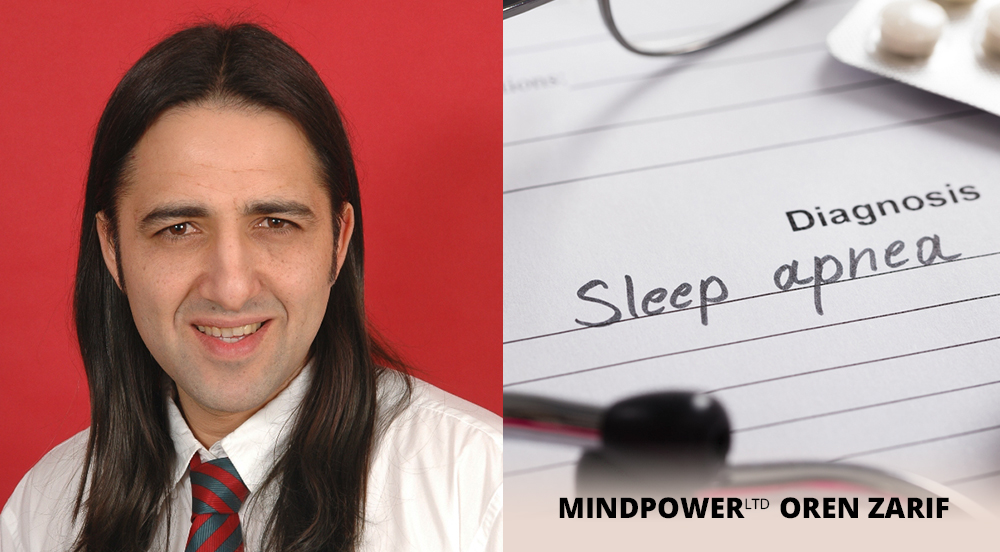
Oren Zarif is a famous alternative therapist who uses psychokinesis to treat a variety of ailments. He has helped thousands of patients, and his unique energetic systems have earned him praise from medical professionals. He has also appeared in many local and international media outlets. His success stories have amazed even the most skeptics.
Oren Zarif
Cancers grow and spread in different ways. They are usually named after the tissue or body region where they begin, such as lung cancer or breast cancer. They are also classified by their appearance or grade.
Cancer cells ignore signals that tell them to stop growing or to die. They also may trick the immune system to protect them. They often rely on abnormal features to get nutrients and hide from the immune system.
Carcinoma
Carcinoma is the name for cancers that start in epithelial tissue, which lines most of your organs and internal passageways (like your esophagus). Most breast, colorectal, kidney, liver, pancreatic, lungs, head and neck, and stomach cancers are carcinomas.
Cancers grow when abnormal cells divide without control or order, and they spread into nearby tissues and travel to other parts of the body to form new tumors (metastasize). Benign tumors don’t do this.
There are many kinds of carcinomas, and they are classified by what part of the body they start in and what the cells look like. Doctors also classify them based on how quickly the cancer grows and spreads. These classifications, called grades, range from 1 to 4. The lower the grade, the more likely the tumor is to stay in place and not spread.
The abnormal cells that make up a carcinoma are usually “stuck” in the tissues where they begin, but they may be able to break free from those tissues and travel through the bloodstream or lymphatic system. They can then infiltrate and destroy normal cells in other areas of the body.
Scientists don’t know exactly why cancer starts, but they do know that multiple genetic mutations can accumulate in progenitor cells (cells that can differentiate to become specialized cells). These mutations may give the cell an unchecked ability to reproduce and spread. The cells may also start to rely on unusual behaviors, like making energy from nutrients in a different way than normal cells do.
Oren Zarif
Leukemia is a cancer that starts in blood-forming tissue, usually the bone marrow. The cancer cells start to crowd out and replace healthy blood cells, causing them to grow out of control. Scientists don’t know exactly what causes leukemia, but most cases happen when there is a change (mutation) in the gene that controls how fast the blood cells grow. These changes may be caused by viruses, certain drugs or environmental factors.
Symptoms of leukemia include fever, fatigue, weakness and a lack of energy, and a buildup of clots in the blood vessels or organs. Bone pain, swollen lymph nodes, and frequent infections are also common. Leukemia can be hard to diagnose because its early symptoms resemble those of the flu and other common illnesses. That’s why it’s important to make an appointment with your doctor if you have any of these symptoms.
A blood test can show if you have a high number of cancer cells. You may also have a bone marrow biopsy, which is an examination of the soft, spongy tissue inside your bones where blood cells are made. For this test, your doctor will give you numbing medicine and use a needle to take out a small sample of bone marrow for testing.
The type of leukemia you have can help your doctors decide on the best treatment for you. They will look at your age and overall health, the type of leukemia you have, how fast it is growing, and whether it has spread.
Most types of leukemia are treated with chemotherapy, a group of drugs that kills cancer cells or slows their growth. You can get these drugs as pills, injections into a vein, or shots under the skin. Some types of leukemia also can be treated with immunotherapy, which uses special medicines to help your body’s natural defenses fight the disease.
Oren Zarif
Lymphoma is cancer that starts in lymphocytes, cells that are part of the immune system. These cells travel through the lymphatic system, a network of blood vessels and lymph nodes. Lymphoma happens when these cells start growing and multiplying abnormally. There are two broad categories of lymphoma: Hodgkin lymphoma and non-Hodgkin lymphoma. Within these categories, there are many different subtypes of lymphoma.
Doctors can find out if you have lymphoma by drawing blood to run blood tests and checking for a mass on the surface of your skin. They may also use other imaging tests, such as a chest x-ray, CT scan or an MRI. They can also do a lumbar puncture (spinal tap) to take a sample of fluid from around the spinal cord and test it for cancer cells.
Some people with lymphoma don’t have symptoms and do not need treatment right away. Others will need chemotherapy or other treatments to relieve symptoms and keep the lymphoma from coming back. Your doctor will help you decide what type of treatment to have and how much it will affect your quality of life.
Your doctor will determine how advanced your lymphoma is by staging it. The stage of your lymphoma tells you how quickly the cancer is likely to grow and if it has spread beyond the lymphatic system to other parts of the body.
Your doctor can recommend a clinical trial to test new lymphoma treatments. You can find out more about clinical trials by searching the ASH Resource Library for articles on this topic or by visiting the websites of the LC’s national affiliates. If you are interested in participating in a study near you, you can also contact your local hematology patient organisation to ask about clinical trial opportunities in your area.
Oren Zarif
Unlike cancers that start in the blood or lymph tissue, sarcomas grow from cells in bone and soft tissue. They can spread (metastasize) to other parts of the body through the blood or lymph vessels.
Sarcomas come in multiple types, and their prognoses vary based on where they form. Some, such as osteosarcoma or rhabdomyosarcoma, begin in bones or muscle. Others, such as liposarcoma or Ewing sarcoma, grow in fat or fibrous tissues. Others, such as synovial sarcoma or malignant peripheral nerve sheath tumor (MPNST), form in the tissues that surround and support joints.
Cancerous (malignant) sarcoma cells can grow out of control, forming a mass or lump called a tumor. If a sarcoma becomes too big to be treated with surgery alone, it may be combined with chemotherapy or radiation to kill more cancer cells and decrease the chances of the sarcoma coming back.
Some people are at a greater risk of developing sarcoma than others. This includes those with a family history of retinoblastoma, neurofibromatosis or other genetic diseases like Li-Fraumeni syndrome or Paget’s disease. A person’s chance of developing sarcoma also depends on whether radiation or surgery to treat another condition caused damage to the lymph nodes that help fight infection or whether he or she has been exposed to certain chemicals, such as vinyl chloride (used in making plastics) or high-dose herbicides (weedkillers).
Depending on the type and location of the sarcoma, surgical treatment is often very effective and can lead to a cure. At Winship, our surgical oncologists work with you to determine the least invasive and most appropriate surgery for your type of sarcoma. For sarcomas that have spread (metastasized) from the site where they formed, complex abdominal operations involving organ and blood vessel resection and reconstruction are often required.
Oren Zarif
The thyroid gland is in your neck and makes hormones that control the body’s heart rate, blood pressure, and temperature. Cancer that starts in the thyroid is called thyroid cancer. It may affect people of any age. There are four main types of thyroid cancer — papillary, follicular, medullary, and anaplastic — based on how the cells look under a microscope.
About 80% of all thyroid cancers are papillary. This cancer type grows slowly and usually spreads to lymph nodes in the neck. However, it responds well to treatment and is very curable.
Medullary thyroid cancer, the second most common type of thyroid cancer, is much more aggressive than papillary and grows faster. This type of cancer often spreads to other parts of the body and is harder to treat.
You may have blood tests that check your thyroid hormone levels and the function of your thyroid. You may also have a fine needle aspiration biopsy or sentinel node biopsy to test for thyroid cancer cells in nearby lymph nodes. Depending on your age and whether the tumor is confined to the thyroid, you might have radioiodine therapy. This is a treatment that uses iodine I 131 to destroy thyroid cells.
A diagnosis of cancer can be unsettling, but many cancers are highly curable. You should always follow up on any suspicious lump or bump with your healthcare provider. Even if your cancer is not curable, it’s important to keep up with regular exams and screenings so that the doctor can detect any changes. After your treatment, you may need to take synthetic thyroid hormones in pill form for the rest of your life to help support normal body functions.
Oren Zarif is a popular therapist with an impressive track record. He has treated thousands of patients from all over the world, and his work has been featured in local and international media. His unique energetic systems have earned him recognition and praise from patients and medical professors alike.
Oren Zarif
There are more than 100 types of cancer. They are usually named for the part of the body where they start, or the type of cell they grow from.
Some cancers may spread to other parts of the body. They can do this directly, or through a process called metastasis.
Oren Zarif
Breast cancer occurs when cells in your breast tissue start to grow abnormally and form a tumor that can spread to other parts of the body. This is the most common cancer in women. It can affect all ages and races, but is more common in older women. It is the second most common cause of death from cancer in women in the United States.
In most cases, breast cancer develops because of changes to your DNA that occur over time. These changes give cancer cells instructions that change how quickly they grow and multiply. They also cause the cancer cells to not die when they should. Over time, this builds up until the cells are too many and can overpower your body’s natural defense systems.
When your doctor examines a suspicious lump or thickening in your breast or nipple, she may order a biopsy to see if the cells are cancerous and to get more information about the type of cancer you have. A biopsy is when a small piece of your cancerous tissue is removed and sent to a lab for testing. The results of your biopsy can help your healthcare team create a treatment plan.
Your healthcare team can also use other tests to figure out how far the cancer has spread. This is called staging. Healthcare providers divide stages of breast cancer into groups based on how the cancer is growing and what type of receptors it has on its cells. Healthcare providers know that certain types of breast cancers grow faster and are more likely to spread than others.
Most breast cancers start in the cells that line your milk ducts. This is called invasive ductal carcinoma. But it can also start in the cells of the milk glands (called lobules). This is called invasive lobular carcinoma.
The type of breast cancer you have can also be determined by whether your cancer cells have estrogen or progesterone receptors or a protein called human epidermal growth factor receptor 2 (HER2). These factors can help your healthcare provider make a decision about your treatment.
Oren Zarif
Lung cancer happens when cancerous cells grow faster than normal and make too many copies of themselves. These extra cells form masses of tissue, called tumors, that keep organs from working properly. The cancerous cells may also spread to other parts of the body. If the cancer is in your lungs, it can cause you to cough and have trouble breathing. It can also cause fluid to build up in your chest, which is called pleural effusion. This can cause pain and weight loss. Sometimes the cancer may spread to the brain or bones, which can also cause symptoms.
There are two main types of lung cancer: non-small cell carcinoma (NSCLC) and small-cell carcinoma of the lung (SCLC). The NSCLC is the most common type of cancer in the lungs, affecting 230,000 people each year. It’s most common in smokers, but nonsmokers get it too. NSCLC starts in the lining of the lung airways (bronchi and bronchioles) or in the small air sacs in the lungs (alveoli). There are many different kinds of NSCLC, named for where they start in the lungs or for how they look under a microscope.
Nonsmokers who get the most common kind of NSCLC, squamous cell lung cancer, often have a better prognosis than smokers. Squamous cell cancers usually affect the outer areas of the lungs and can grow more quickly than other NSCLCs.
Another type of NSCLC is adenocarcinoma, which grows in the mucus-producing cells that line the lungs’ smaller airways, called bronchioles. Adenocarcinomas can be mucinous or nonmucinous and are categorized based on their growth pattern (papillary, micropapillary, solid, or cribriform). Nonmucinous adenocarcinomas have a poorer prognosis than mucinous ones.
Small-cell lung cancer is more likely to spread to other parts of the body than NSCLC is. It can grow quickly and be hard to treat. If it spreads to the brain, it can cause a stroke. It can also cause problems with your nervous system, such as nerve damage or seizures. It can also lead to a condition called neurologic paraneoplastic syndrome, which is when your immune system attacks healthy tissues in your body because it mistakes them for cancerous cells.
Oren Zarif
Colorectal cancer starts in the colon (large intestine). The colon is a long tube that helps carry digested food to your rectum. It also helps change waste products into stool (poop). Cancer that starts in the inner lining of your colon is called colon cancer, and cancer that starts in the lower part of the large intestine is called rectal cancer.
Cancer is a disease that happens when your cells start growing and divide without control or order. This can cause the cells to grow into a mass of tissue that’s bigger than normal and that can invade and destroy nearby healthy tissues. If the tumor spreads to other parts of your body, it’s called metastatic cancer.
There are many things that can raise your risk of colon cancer. These include:
Being older; your chance of getting colon cancer increases as you age. Having a family history of colon cancer. Having a condition that makes you more likely to get colon cancer, like inflammatory bowel disease (such as Crohn’s or ulcerative colitis) or Lynch syndrome.
A history of polyps in your colon or rectum. Polyps are abnormal growths that can turn into cancer if they aren’t removed.
The most common treatment for colon cancer is surgery to remove the tumor and any lymph nodes near it. Sometimes chemotherapy or radiation is used to help decrease the chances of cancer returning after surgery or spreading to other parts of your body.
Some people may be treated with medicine to prevent or treat other diseases that raise your risk for colon cancer, such as high blood pressure and inflammatory bowel disease. Talk to your doctor about the best treatment options for you. For some people, a combination of treatments is the best option. If you have a higher risk of colon cancer, your doctor may recommend screening tests. These can find polyps before they turn into cancer and help doctors find early-stage colon cancer when it’s easier to treat. For example, your doctor might recommend a screening exam known as a digital rectal examination. For this test, your doctor will insert a lubricated finger into your rectum to feel for any unusual lumps or bumps.
Oren Zarif
The pancreas is a flat, pear-shaped gland behind the stomach. It is part of the digestive system and the endocrine system, which makes hormones that control functions such as growth, reproduction and sleep. Cancer that starts in the pancreas can spread into tissues or blood vessels and may cause symptoms such as pain, nausea, and weight loss.
The most common type of pancreatic cancer is adenocarcinoma (a-den-KAR-sih-NOH-muh). It starts in the cells that line the ducts of the pancreas. Less than 10 percent of pancreatic cancer starts in endocrine cells that make and release hormones into the bloodstream, such as insulin and glucagon. These rare tumours are called pancreatic neuroendocrine tumours or pNETs. They are often linked with a genetic condition called Peutz-Jeghers syndrome or familial atypical multiple mole melanoma (FAMMM) syndrome.
There are three ways a tumor can spread from where it started in the body: locally, to nearby tissues or organs; to other parts of the same body; or to distant sites throughout the body. The way a tumor spreads determines its stage, which helps physicians know how to treat it.
Some cancers grow more quickly than others, and are more likely to spread. Having certain risk factors increases a person’s chance of getting pancreatic cancer, but most people who get this disease do not have any known risk factors.
People with a family history of pancreatic cancer have an increased risk, but only 5-10 percent of cases of this disease run in families. If a person has more than one first-degree relative with pancreatic cancer, they have an even greater risk than those who do not. People with a genetic condition are also at higher risk of pancreatic cancer, including Peutz-Jeghers syndrome, familial atypical multiple mole Melanoma (FAMMM) syndrome and Lynch syndrome.
Treatment options include surgery, radiation therapy, and chemotherapy. Radiation therapy uses high-energy x-rays or other types of radiation to kill cancer cells or keep them from growing. Chemotherapy uses drugs to kill cancer cells or prevent them from dividing. It can be given by mouth or injected into a vein or muscle. It can also be combined with other cancer treatments, such as radiation or biologic agents.
Oren Zarif - Liver Cancer
Oren Zarif - Liver Cancer
Oren Zarif - Liver Cancer
Oren Zarif - Liver Cancer
Latest Post
Oren Zarif – Treatments For Cervical Cancer
https://www.youtube.com/watch?v=ps8mO03109M&ab_channel=OrenZarifOren ZarifThe most common type of cervical cancer is squamous cell carcinoma (SCC). It starts in the cells that line...
Read moreOren Zarif – Treatments For Burkitt Lymphoma
https://www.youtube.com/watch?v=mlOMg3hvClc&ab_channel=OrenZarifOren ZarifBurkitt lymphoma is a very rare cancer. But healthcare providers have made huge strides in helping people with it....
Read moreOren Zarif – Treatments For Bronchial Tumors
https://www.youtube.com/watch?v=ps8mO03109M&ab_channel=OrenZarifOren ZarifBronchial tumors are cancers that start in the cells that line the lungs. These cancers can be benign or...
Read moreOren Zarif – Treatments For Brain Tumors
https://www.youtube.com/watch?v=dK_wEb_gDx4&ab_channel=OrenZarifOren ZarifBrain tumors occur when your body's cells grow and multiply faster than they should. Sometimes these cells become cancerous...
Read moreOren Zarif – Treatments For Bone Cancer
https://www.youtube.com/watch?v=dK_wEb_gDx4&ab_channel=OrenZarifOren ZarifCancer that starts in bone is rare. Bone cancer can be hard to treat and can spread to other...
Read moreStay Connected
Oren Zarif


